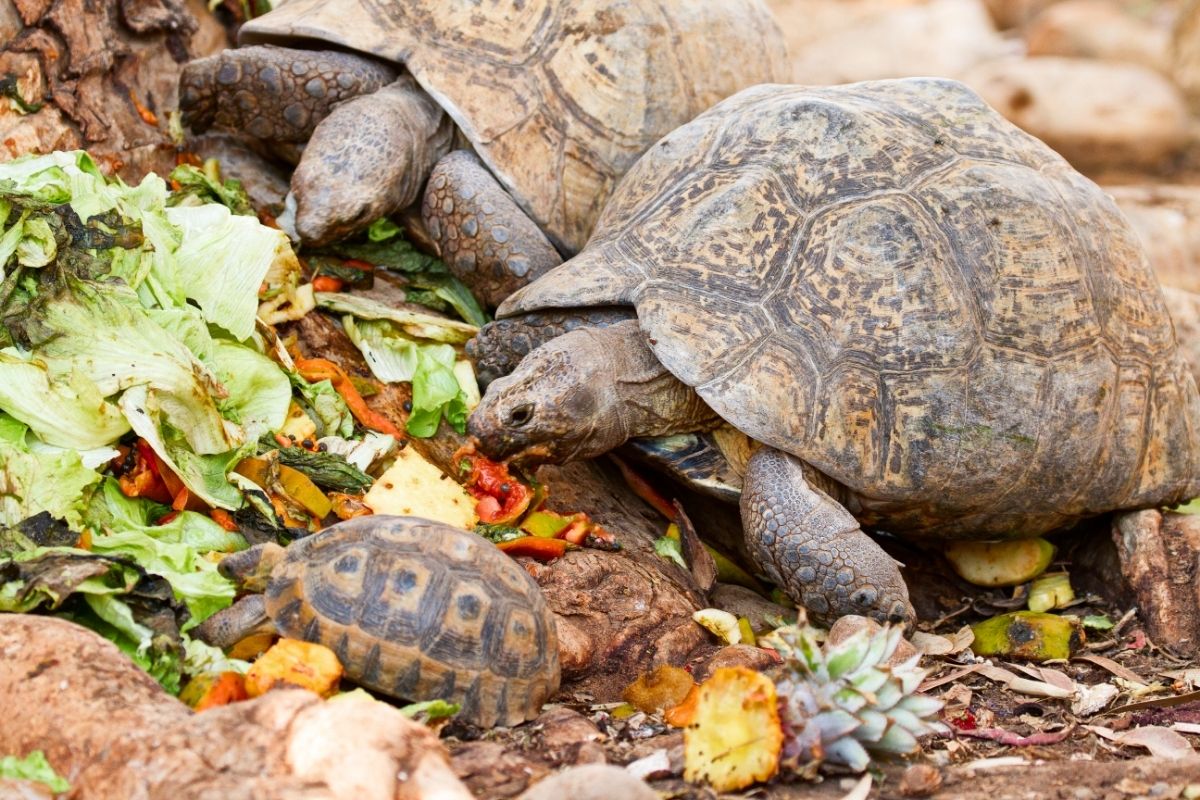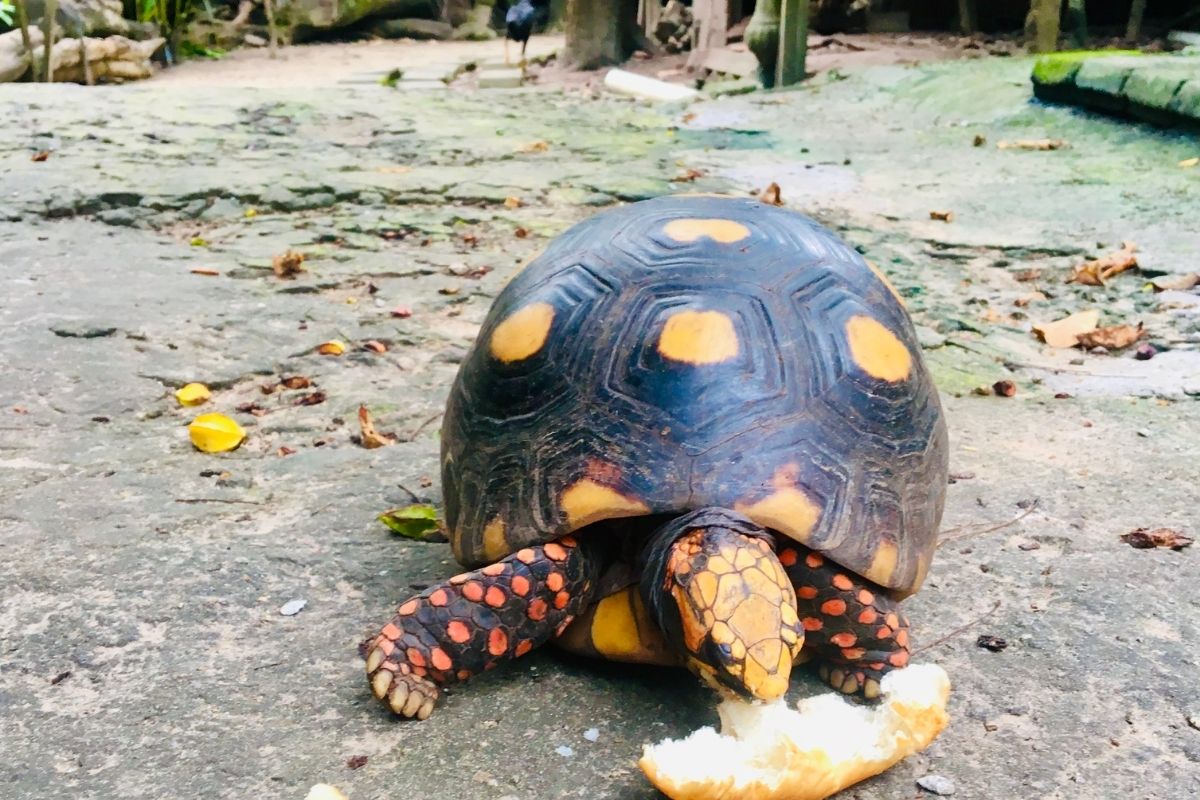Turtles, tortoises, terrapins, and other reptiles are often seen as pets or kept as exotic animals. They are all cold-blooded members of the Chelonian reptile family, so they are related to each other.
Turtles are omnivores that reside in the sea, and tortoises are herbivores that live on land. Terrapins are a type of turtle that is smaller, and they live in freshwater (lakes and streams) or brackish water (slightly salty water).

Whether turtles, tortoises, and terrapins can eat oranges is a question that has been frequently asked, as owners of these pets want to feed them the best diet possible. The simple answer is yes, only in moderation.
This article will go into detail on this, so you can be best informed on how to feed your pet.
Turtles, Tortoises, And Terrapins
Before we delve into whether these three species can eat oranges, let’s learn about the differences between them.
Turtles
Turtles have been around for hundreds of millions of years. The earliest fossils were found in China. They lived during the Jurassic period, and these ancient creatures had shells made from calcium carbonate.
Today, turtles live in water habitats. They are easy to distinguish from tortoises because they spend most of their time swimming around. They are only likely to emerge to lay eggs.
However, this will depend on the species of turtle. Some species spend time in the water and on land, but eventually, they will return to the water, which is how you can distinguish them from tortoises.
Turtles are omnivores, meaning they eat meat and plants. Again, some species will deter from this, but as a general rule, you will see them eating both kinds of food.
Turtles are one of the most popular types of reptiles in the world. There are over 60 different varieties of turtles.
Some of these include box turtles, red-eared sliders, snapping turtles, painted turtles, softshell turtles, mud turtles, Chinese softshell turtles, and more.
Tortoises
Tortoises are similar to turtles in appearance. They also have shells made from calcium carbonates. They are native to Africa, Asia, Australia, and South America.
Today, there are over 100 different kinds of tortoises. Many of these are endangered due to habitat loss.
Unlike turtles, tortoises live on land. They are also herbivores, meaning they only eat plants.
In the wild, you will see them eating any kind of plant matter they can find, but they will cleverly avoid toxic plants.
Tortoises are another type of reptile that is very common around the world. The best way to tell the difference between them and turtles is that tortoises are solely land creatures.
You may see one bathing in water, but it will not swim, so if you own one, you should make sure it cannot get close to deep water.
Terrapins
Terrapins are similar to turtles because that is what they are. They are a species of freshwater turtles living in streams and lakes instead of oceans.
They are on the smaller side of turtles and also eat the same diet as turtles. Therefore, when it comes to distinguishing the difference between the three species, the difference between turtles and tortoises is the same as the difference between terrapins and tortoises.
Can Turtles, Tortoises, and Terrapins Eat Oranges?
The answer is yes!
Although turtles and terrapins are omnivores, and tortoises are herbivores, both can consume fruit, and certain fruits are recommended, so they follow a healthy diet.
In fact, some species of turtles even eat citrus fruits. For example, the box turtle eats lemons, limes, grapefruit, tangerines, and oranges. It does so by using its tongue to pull off the skin and then swallowing the pulp.
Turtles
As mentioned earlier, most turtles are omnivores, meaning they can eat anything, including fruits. The ones that are omnivores can eat oranges, but as they are higher in sugar and can be fattening, so if they are to consume oranges, it should be done in moderation.
However, if you do decide to feed your turtle oranges, you must ensure you have removed the seeds and the skin, leaving only the flesh inside the orange.
Turtles need vitamin A in their diet, which is found in oranges. While they also have a high amount of vitamin C, turtles naturally synthesize this themselves, meaning they do not need to consume foods that are high in them.
When it comes to vitamin A, they cannot synthesize this, so consuming oranges would be good for them.
Tortoises
When it comes to tortoises, experts have recommended that tortoises should not be fed oranges, due to their high acid and high sugar content. These components could harm the tortoise’s gut and cause digestive problems if they eat them often.
However, this bears the question as to whether they can eat them in moderation. Similar to turtles, the high vitamin A content in oranges could be beneficial to tortoises, as long as it is not fed to them in excess.
While tortoises who eat fruit are able to handle the high sugar content, it is the acidity from the citrus that can harm them, so if you want to feed some fruit to your tortoise, it is best to feed them others such as watermelon and apples.
Terrapins
As terrapins are a species of turtle, they, too, are omnivores. This means they can eat fruits and vegetables too.
Like tortoises and turtles, terrapins can eat oranges, but they are more likely to eat them than tortoises. This is because terrapins are better at digesting fruit than tortoises.
As with other omnivores, terrapins should not be fed large amounts of fruit or vegetables. Instead, they should be given small portions of fruit and vegetables every day.
Can Turtles Eat Orange Peels?

If you are feeding your pet oranges, you must be sure to remove the peels. This is the case, no matter if you have a turtle, terrapin, or tortoise.
This is because the peel could have bacteria on it that could cause harm to your little family member and make them seriously ill.
The same goes for the rind because if they ingest this, it could cause intestinal issues.
What Fruits Can They Eat?
Although turtles, tortoises, and terrapins can all eat oranges, they will usually prefer to eat other types of fruit instead. Some examples include apples, bananas, grapes, pears, plums, strawberries, melons, and kiwis.
How Much Fruit Should You Feed Your Pet Turtle/Terrapin/Tortoise?
If you are looking to give your pet turtle, terrapin, or tortoise fruit, then you should be aware that they will generally prefer to eat smaller portions of fruit rather than larger ones.
This means that if you are planning on giving them fruit, you should choose something like bits of an apple over a whole orange.
For example, one study showed that when compared to a banana, feeding a tortoise an apple was more effective at increasing its weight gain.
Another study showed that feeding a tortoise a piece of apple was more effective at helping with digestion than feeding them a slice of orange.
It is important to remember that while these studies were done with tortoises, the results may apply to other species of pets, such as turtles and terrapins.
It is also worth noting that the amount of fruit you feed your pet depends on how much they need to grow. For example, if you are trying to increase their weight, then you would need to feed them a lot more fruit than if you are just trying to keep them healthy.
What Should You Not Feed Turtles?
While oranges are safe for turtles, tortoises, and terrapins in moderation, there are certain foods they should not be eating. These are foods involving dairy, such as milk and cheese, as they could cause them to become very ill.
While they do need meat protein, you should only feed this to your turtle every few days, and you should avoid feeding them raw meat.
Final Thoughts
In summary, while these reptiles can eat oranges, it is important to be aware that there are a lot of acidities involved that could harm them. Therefore, oranges should only be fed to them in moderation.
There are plenty of other fruits they can benefit from that are less acidic. These involve apples and watermelons.
